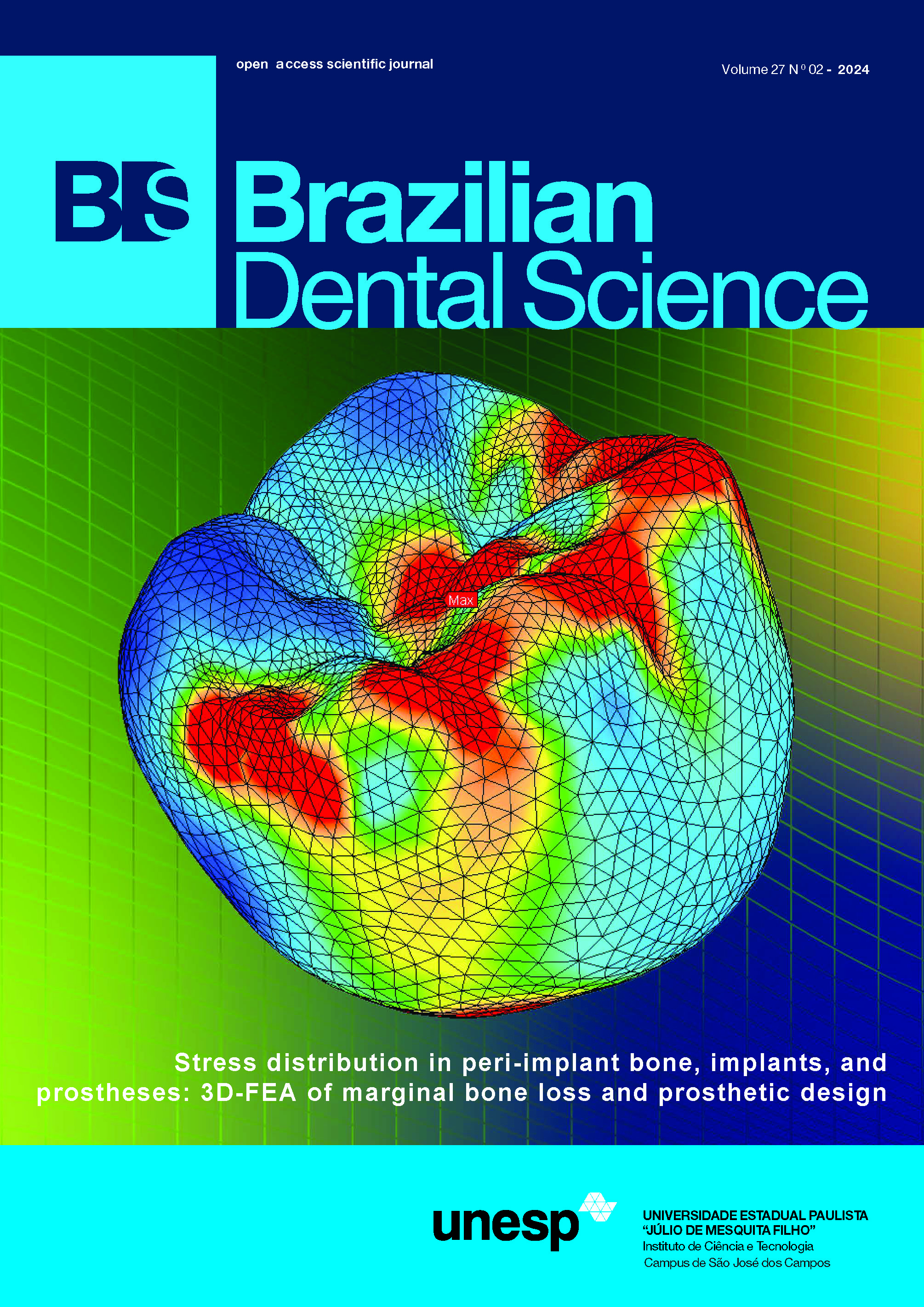Rebonding strengths of lithium disilicate and feldspathic veneers debonded by Er,Cr:YSGG laser
DOI:
https://doi.org/10.4322/bds.2024.e4275Abstract
Objective: The aim of this study is to identify the shear bond strength of rebonded CAD/CAM laminates made of lithium disilicate or feldspathic ceramics after debonding using Er,Cr:YSGG lasers. Material and Methods: Eighty bovine teeth (N=80) were used as a bonding substrate, which were divided into four main groups (20 each) according to the ceramic material and cement-curing mode used as follows: Group AL: lithium disilicate (IPS E.max) with light-cured resin cement, Group AD: lithium disilicate (IPS E.max) with dual-cured resin cement, Group BL: feldspathic porcelain (VITA MARK II) with light-cured resin cement, and Group BD: feldspathic porcelain (VITA MARK II) with dual-cured resin cement. Half the number of each subgroup (n=10/subdivisions) were tested for their shear bond strength without debonding, while the other half of the specimens were tested after Er,Cr:YSGG laser debonding and rebonding. A three-way ANOVA test was used to study the effect of ceramic and curing on shear bond strength. Bonferroni’s post-hoc test was used for pairwise comparisons when the ANOVA test was significant. Results: After rebonding and using the light-cure mode, there was no statistically significant difference between the mean shear bond strength of the two ceramics (P-value = 0.065). However, after rebonding and using the dual-cured mode, E.max showed significantly lower shear bond strength than VITA (P-value < 0.001). Conclusion: Ceramic type, the cement’s curing mode, and rebonding after laser irradiation all had a significant effect on the mean shear bond strength.
KEYWORDS
Ceramic veneers; Debonding; Er,Cr: YSGG; Feldspathic; Laser.
Downloads
Published
How to Cite
Issue
Section
License
Brazilian Dental Science uses the Creative Commons (CC-BY 4.0) license, thus preserving the integrity of articles in an open access environment. The journal allows the author to retain publishing rights without restrictions.
=================




























